It was a female Swee Waxbill wanting to eat some grass seeds.
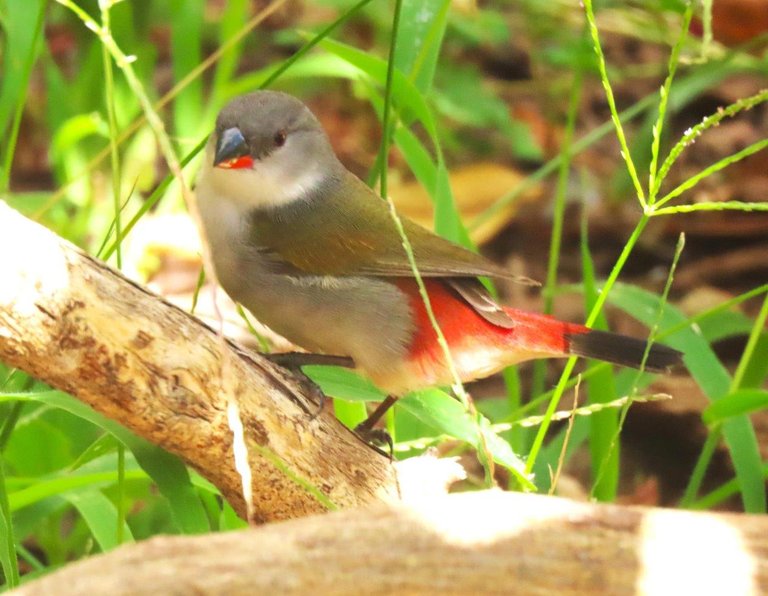
My wife called me, as she was standing at the lounge's window.
We have some long stemmed grasses growing below our lemon tree and the swees love the seeds.
The swee waxbill (Coccopygia melanotis), is a common species of estrildid finch native to Southern Africa.
The swee waxbill is 9–10 cm long with a grey head and breast, pale yellow belly, olive back and wings, red lower back and rump, and a black tail. The upper mandible is black and the lower red. The male has a black face, but the female's face is grey. Juveniles are much duller than the female and have an all-black bill.
The swee waxbill is typically found in uplands in dry shrubland and open forest habitats. Some subspecies also occur in lowlands, and may be seen in large gardens.
This species is a common and tame bird typically seen in small parties, and does not form large flocks. The swee waxbill's call is typically considered a soft swee, swee.
I have to correct the second line in the paragraph above, and may be seen in large gardens, as we have a small garden :)
Cute little critters and they are only 10cm in size. At times the husband also appears here, and I know the difference in their gender, as the husband has the same colors, but he has a black face.
Here she landed on one of our Aeonium succulents below the lemon tree.
I was almost sure that she was watching me, but no, she was checking for the juiciest grass seeds.
And I was right, as here she grabbed a strand of the grass to eat the seeds.
The swees are small, interesting and beautiful little birds, and a pleasure to watch in action. We once had them nesting in the front garden, but the nest had to be very small and hidden in the leaves of a dense tree. I never saw the nest, as I was scared that they would get disturbed at my presence, and we also didn't see their babies. Best to leave the wild alone in their habitats in order for them to feel secure.
Now then, how did I know that they were nesting in the tree? Easy, as I saw them flying into the tree with nesting stuff in their beaks. I have to say that I was eager to see the nest and later on the babies, but I managed to control myself and allowed nature to follow its course. This is what I love about the seasons, as spring and early summer deliver much new life in nature, and there is always an opportunity for someone to get the new ones on camera.
Such is life.
I hope you enjoyed the pictures and the story.
Photos by Zac Smith-All-Rights-Reserved.
Camera: Canon PowershotSX70HS Bridge camera.
Note: Please don't share any of my posts and photos on other social media sites without my permission.
Thank you kindly for supporting this post.
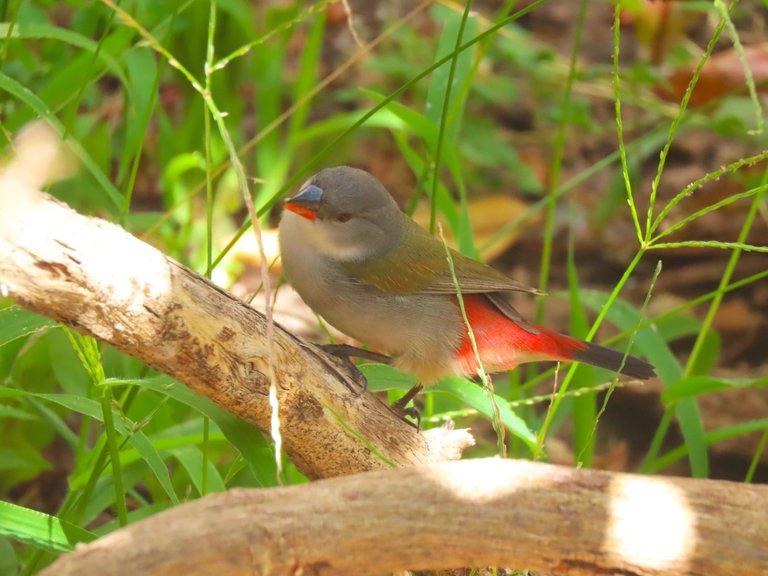
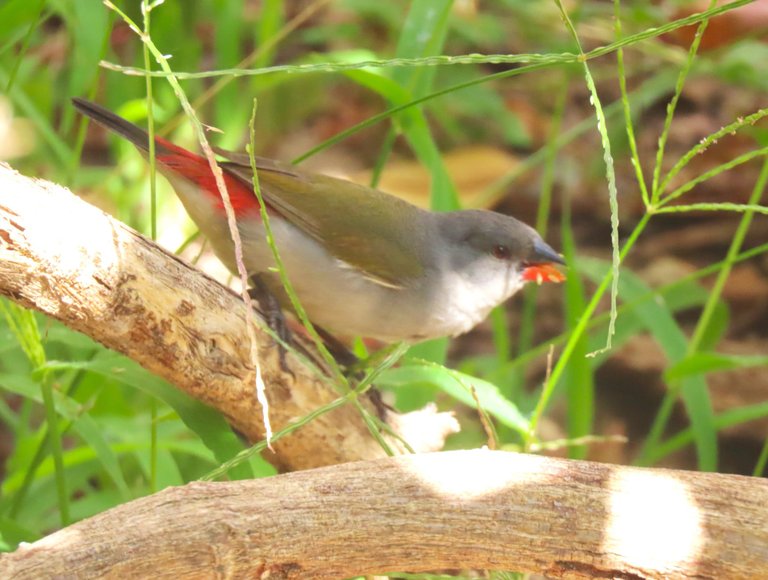

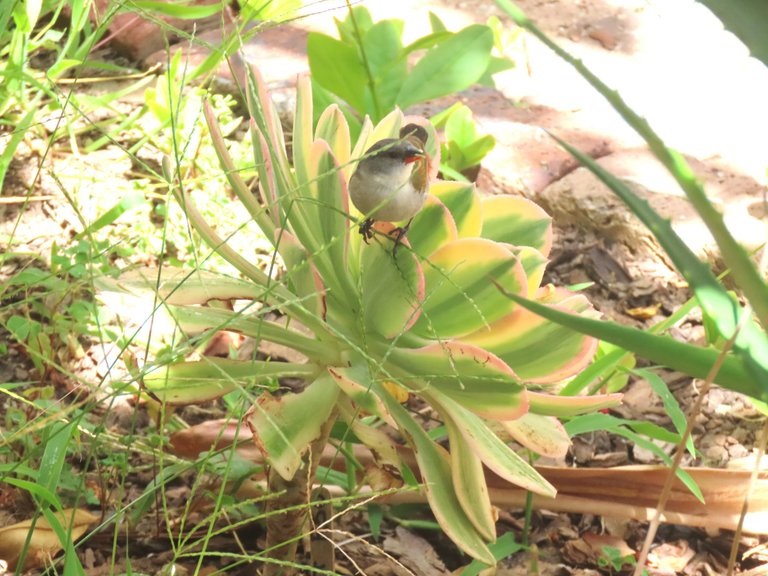
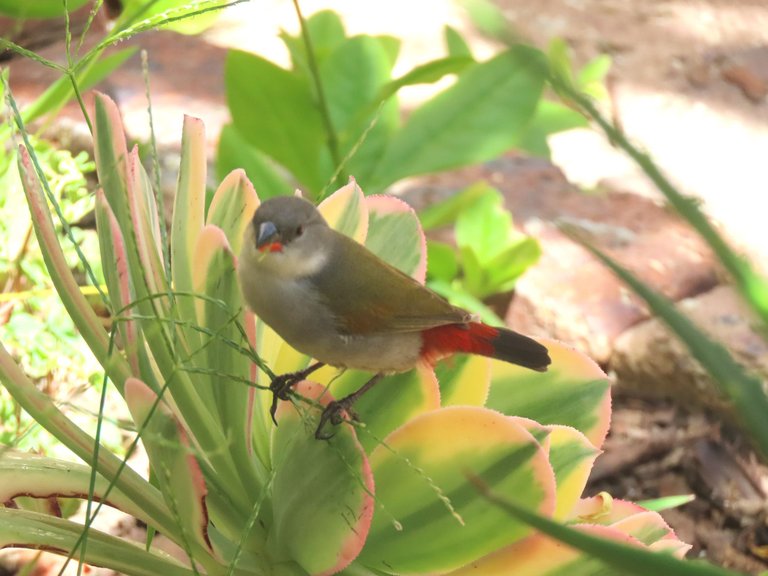
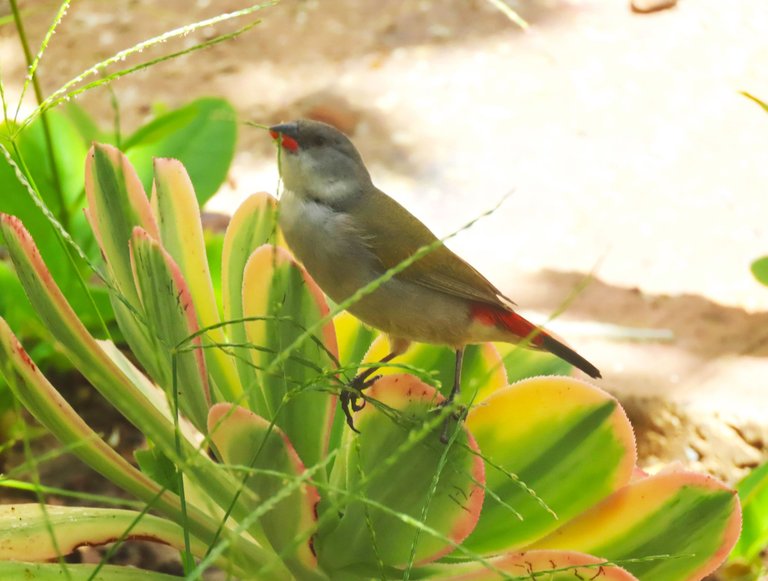
Hermosas fotos !¡!
Thank you. !LOL
She's a real beauty, and only too happy to pose for you! Likely will not be so calm if you had to approach the nest though. Stunning photos Zac!
!LOLZ I don't think that birds can see through glass windows milady, and even if this one could, she simply ignored me. Only my zoom can go near to bird's nests.
Glad that you liked the photos.
!PIZZA and !LUV
(1/10) sent you LUV. | tools | discord | community | HiveWiki | <>< daily@lizelle, @papilloncharity
Nice Shots
Thank you. !LOL
Thank you dear
Wow, this is extraordinary, this is the first time I have seen a sparrow whose feathers are partly red.
I wish that it was a sparrow, but it is a Waxbill Swee, and they are much smaller than sparrows. !LOL
Little Swee bird is dainty, last time I saw them was in the Drakensberg in a gorgeous garden.
Nice sighting to have new little visitors pop in to say hello!
!LUV
(1/10) sent you LUV. | tools | discord | community | HiveWiki | <>< daily@papilloncharity, @joanstewart
The only explanation for their presence here that I can think of, is that we are also close to high mountains, and we have a Mediterranean climate.
Yep, always a pleasure to see new visitors. !LOL
!LUV
(3/10) sent you LUV. | tools | discord | community | HiveWiki | <>< daily@joanstewart, @papilloncharity
I love seasonal change with new birds in town, the feathered kind....
Have a wonderful weekend!
Only the feathered kind !LOL
Yay! Another National Geographic lesson for me!
So cool to see species exotic to me and learn a little about them too. They look so fluffy in the first few shots! Must be that fresh spring plumage.
Also weird to think it is spring there when we are in the dead of winter.
These are some not wuite so neat birds around here. This is one lomitation of only shooting pics on a phone. They dont do zoom/acrion shots justice like you need for birds.
Thanks again and hello from the great white north!
Thank you band these little ones have their plumage all year round.
That is a fantastic photo, as we have never seen things like this here. We don't get snow, and I am always fascinated by the pictures that I see online.
Yes, one needs a zoom to take pictures of birds, but phones can also take birds when they are close up. I think in your case, they never get close up.
Such is life and greetings from the deep south.
!BEER
View or trade
BEER.BEERHey @zekepickleman, here is a little bit of from @papilloncharity for you. Enjoy it!BEER at dCity game to buy cards to rule the world.Did you know that <a href='https://dcity.io/cityyou can use
You have your Hive article delivered at home !! Nice !!
Oh yes, Mother Nature loves me. !LOL
We see many such sightings in the morning when these birds wake up early in the morning and go out in search of their food.
Oh yes, it happens all over the world and the only thing is that it is different birds that come to feed in different countries. !LOL
Wonderful photos of the cute bird. I could never get close to small birds as they are too fast!
There are some tricks to get close to little birds, and one has to practice until one gets it right.
!LOL
I could never do these tricks! The birds are much smarter than me! They have higher IQ!
Hive.Pizza upvoted this post.
$PIZZA slices delivered:
(1/15) @papilloncharity tipped @lizelle
Learn more at https://hive.pizza.